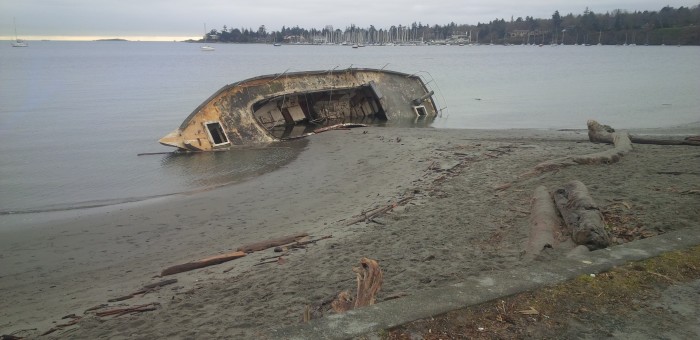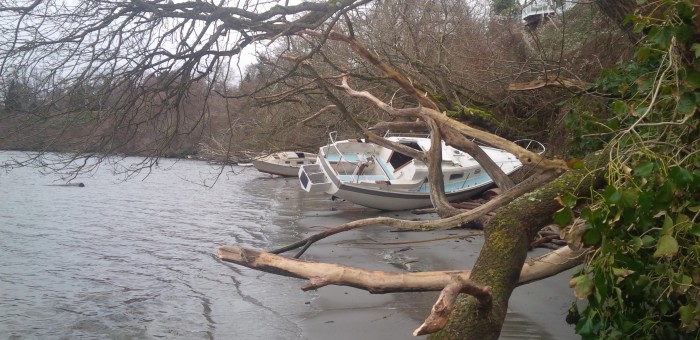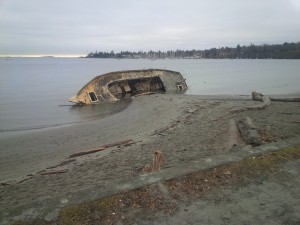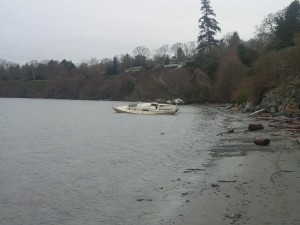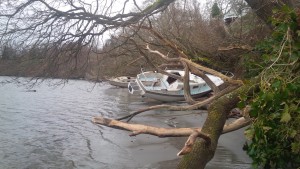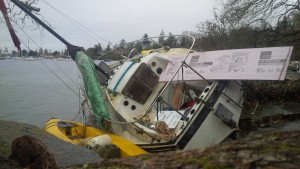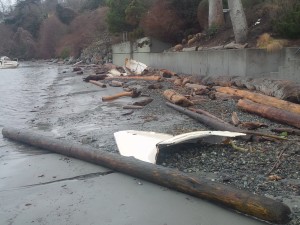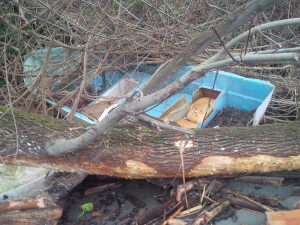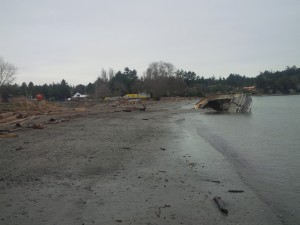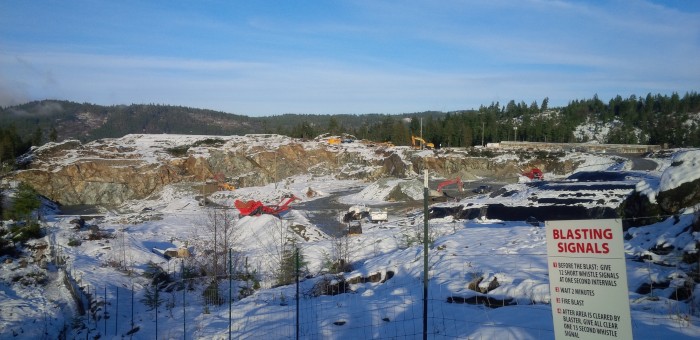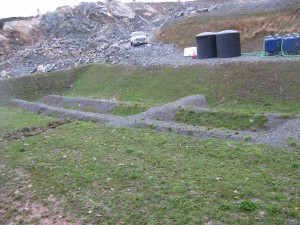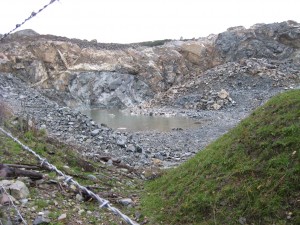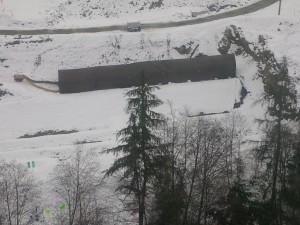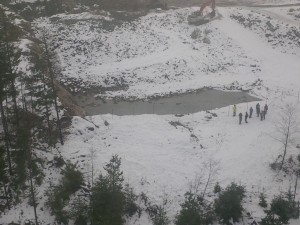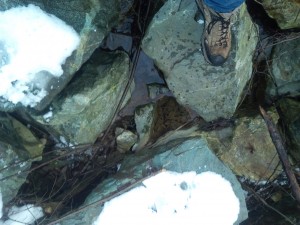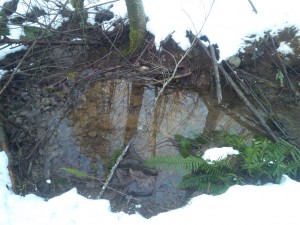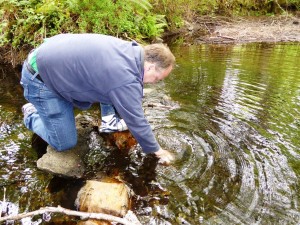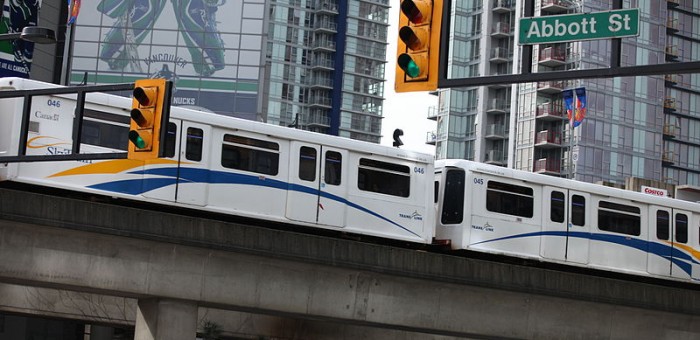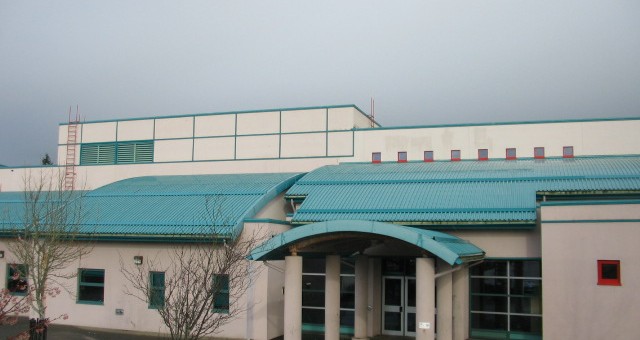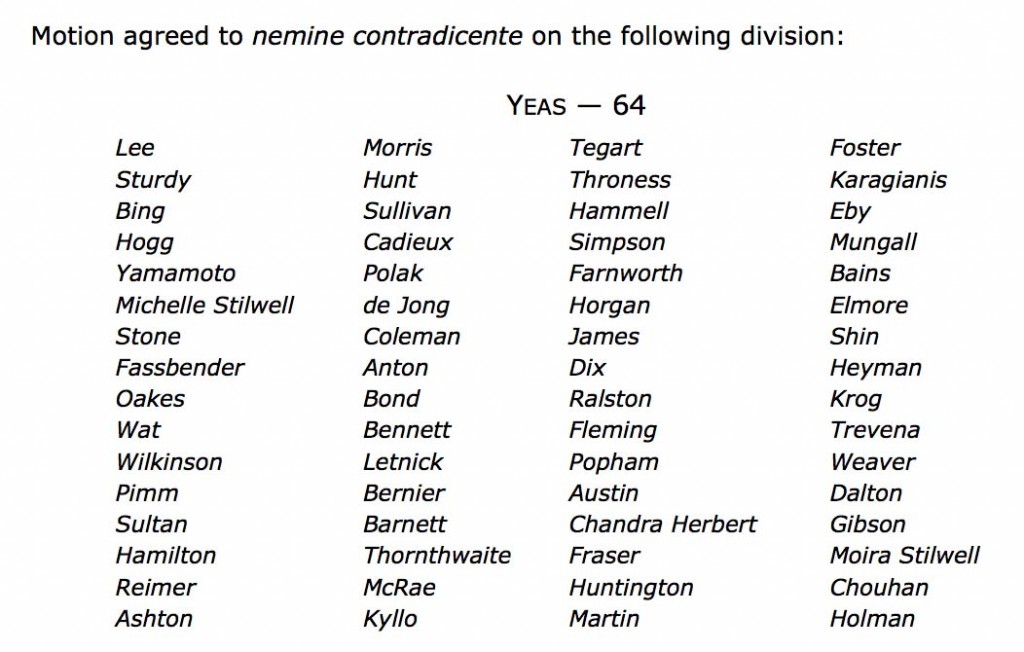Local Government
Derelict Vessels in Cadboro Bay – an Update
On January 16, I wrote about the need to deal with derelict vessels in a timely manner. In particular, I discussed the situation on Cadboro Bay beach where a number of derelict or abandoned vessels were washed up in the intertidal zone. At the end of that post, I reproduced a copy of a letter I sent to the Minister of Forests, Lands and Natural Resource Operations. Below is the response I received to my letter.
Response from Minister Thomson
Reference: 219643
February 5, 2016
Andrew Weaver, MLA
Oak Bay-Gordon Head
219-3930 Shelbourne Street
Victoria, British Columbia
V8P 5P6
Dear Dr. Weaver:
Thank you for your letter of January 13, 2016, regarding the beached derelict vessel Pacific Sun King located in the upper inter-tidal zone of Cadboro Bay.
As you may be aware, dealing with problem vessels and structures on Crown foreshore is a complex, time-consuming and costly job that can involve multiple agencies and levels of government depending on the circumstances. In this case, the Canadian Coast Guard has spent a considerable amount of time attending to this vessel to ensure pollutants have been removed. The Coast Guard is confident that they have mitigated any pollution concerns and have suggested that Transport Canada’s Receiver of Wreck program take over as this is now under their jurisdiction.
Communications between the Department of Fisheries and Oceans, Ministry of Environment Emergency Response Officers, Ministry of Forests, Lands and Natural Resource Operations, and representatives from the Municipality of Saanich took place in mid-December to explore options for removing the vessel from the beach. Collaborative work is ongoing to find a solution and to determine the precise timing for the removal of this vessel.
In fall 2014, the ministry worked with federal agencies to complete a public information document and staff technical guide that clarifies roles and responsibilities when dealing with problem vessels. Provincial and federal agencies are continuing to coordinate efforts to deal with problem vessels and structures on Crown foreshore on a priority basis, those that pose an immediate threat to navigation safety or the environment are top priority.
The province is committed to continue to work with federal agencies, and others, to seek ways to improve the management of problem vessels.
Sincerely,
Steve Thomson
Minister
We Need to Deal with Derelict Vessels in a Timely Manner
Have you walked along Gyro beach in Cadboro Bay lately? It looks like a graveyard for derelict vessels.
Dealing with derelict vessels can be a jurisdictional nightmare. To make matters worse, the municipal boundary between Oak Bay and Saanich puts some of these vessels in the Saanich intertidal zone and some in the Oak Bay intertidal zone. It’s even possible that one of these ships is half in Saanich and half in Oak Bay.
This is not a new situation in British Columbia. In 2014, the Ministry of Forests, Lands and Natural Resource Operations released a comprehensive report entitled: Dealing with problem vessels and structures in BC waters. The report outlines the jurisdictional conundrum and specifically notes:
Often, there is no simple answer to the question: Who should be dealing with this problem?”
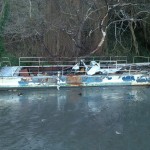 In addition, the report provides information as to who should be contacted if a derelict vessel is found. The contact information is quite detailed to specific cases but fails in the larger case when numerous derelict vessels are washed ashore. This is the situation in Cadboro Bay. In addition, the report has a caveat in the form of the following disclaimer:
In addition, the report provides information as to who should be contacted if a derelict vessel is found. The contact information is quite detailed to specific cases but fails in the larger case when numerous derelict vessels are washed ashore. This is the situation in Cadboro Bay. In addition, the report has a caveat in the form of the following disclaimer:
Readers are cautioned that this paper is not legal advice. It is the intention of Ministry of Forests, Lands and Natural Resource Operations to update this paper as provincial and federal programs evolve.
My colleague, Adam Olsen has written a blog entry detailing longstanding municipal concerns regarding the lack of federal and provincial leadership in dealing with derelict and abandoned vessels that pollute our coastline. Most recently he worked to raise awareness of the plight of the Chilcotin Princess at the abandoned fish cannery in Namu, BC. The good news is that province and the federal government worked to remedy the situation at Namu, but the piecemeal approach to the management and disposal of derelict and abandoned wrecks is not working.
On Friday January 15, I walked the length of Gyro Beach to get a sense of the scale of the problem we are facing in the riding of Oak Bay-Gordon Head. It was far worse than what I had expected. For quite some time, there has been one derelict vessel (see thumbnail to the right above) that was difficult to reach (except at low tide). Last year I’d inquired as to the possibility of removing it and quickly realized the complexity of the jurisdictional quagmire. But the situation now is very serious. Below I show a few images of the vessels that were present.
So where do we go from here? Clearly the status quo is not working and clearly this is neither a new problem nor one that will go away any time soon. Perhaps a way forward is to explore the innovative steps that have been taken by our friends in Washington State.
While I will be exploring broader policy solutions in the months ahead, I have sent the Minister of Forests, Lands and Natural Resource Operations a letter (reproduced below) urging him to deal with an immediate and urgent problem. One of the many wrecks (see image below) on the beach in Cadboro Bay is immediately adjacent to Gyro Park which has been extensively upgraded and improved over the last few years. Gyro park is a regional treasure and has been the playground of several generations of young children (including my wife and me in the 1960s and 1970s and our children in the 1990s and 2000s). Having this wreck so close to a children’s playground is certainly unsafe. And we do not want to wait until an accident happens to have it removed.
Letter to Minister Thomson
Via email to: FLNR.minister@gov.bc.ca
Honourable Steve Thomson
Minister of Forests, Lands and Natural Resource Operations
Room 248, Parliament Buildings
Victoria, BC V8V 1X4
Dear Minister Thomson:
Re: Derelict wreck in Cadboro Bay
I have been contacted by residents in my riding of Oak Bay-Gordon Head and the Cadboro Bay Resident’s Association (“CBRA”) with respect to the beached derelict vessel Pacific Sun King that washed up on December 5, 2015. The residents are very concerned about the vessel as a hazard in Cadboro Gyro Park where it is located, on the Crown Provincial foreshore in the upper inter-tidal zone of Cadboro Bay. The vessel is interfering with public access and presents a danger to children who play in the park and in the area. This area is heavily used by the public and especially children.
The CBRA have been in contact with the Municipality of Saanich and their representatives have confirmed that the responsibility for the removal of the wreck does not fall to Saanich since it is located seaward of the formal boundaries of the park.
I am writing to ask the Provincial Government to take the necessary steps to deal with this urgent matter. In addition to a safety issue for children and residents who access the park and beach, the vessel contains a diesel fuel tank and potential seepage that is an environmental hazard.
I look forward to a reply at your earliest opportunity.
Best wishes,
Andrew Weaver, MLA
Oak Bay-Gordon Head
More Samples, More Questions, More Concerns: Enough is Enough
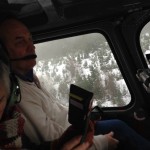 Background
Background
On January 6, 2016 concerned Shawnigan Lake residents invited the media, politicians and the public to come and see the contaminated soil facility operating on Stebbings Road and to listen to their concerns directly. Residents, local councillors and others were in attendance to answer questions. The media and politicians were also taken on helicopter rides over the site in order to get a bird’s eye view of the operations. Indeed I was one of the many politicians who was on one such helicopter ride.
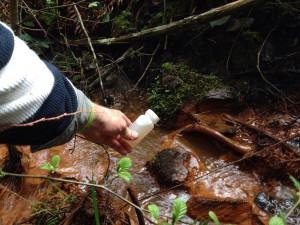 I have written earlier on the wisdom of dumping contaminated soils in the Shawnigan Lake watershed and I have twice collected samples from the effluent running off Lot 21, immediately beside the operating contaminated soil facility.
I have written earlier on the wisdom of dumping contaminated soils in the Shawnigan Lake watershed and I have twice collected samples from the effluent running off Lot 21, immediately beside the operating contaminated soil facility.
The results of my water samples collected on April 2, 2015, together with my observation that a significant amount of fill had over run Lot 21 and was on the neighbouring parkland, led me to subsequently ask the Minister of Energy and Mines and the Minister of Environment questions during Question Period.
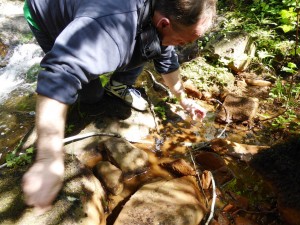 The results of my sediment samples taken on May 15, 2015 at the same site as my earlier water samples led me to ask the question as to what, if anything, has been buried on Lot 21 that could produce the Thorium, Lead and other heavy metal enrichment in the sediments.
The results of my sediment samples taken on May 15, 2015 at the same site as my earlier water samples led me to ask the question as to what, if anything, has been buried on Lot 21 that could produce the Thorium, Lead and other heavy metal enrichment in the sediments.
As the months have passed, residents of the Shawnigan Lake region have continued to raise substantive concerns as to whether or not the operations at the contaminated soil facility are in compliance with the requirements of their relevant permits. On November 16th I rose in the legislature to call for an emergency debate on a recent failure of the contaminated soil site storm water containment and clarification system at the site. I did this after Island Health issued a no-water use advisory “advising residents not to use water taken out of the lake from the south end of Lake Shawnigan, south of Butler Avenue and Verlon Road, due to suspected overflow of water from South Island Aggregates’ site.” This means that residents were being advised “not to use or draw water from the area of the lake for residential or commercial use, including bathing, personal hygiene, drinking and food preparation.”
The Water Containment and Clarification System
It doesn’t end there.
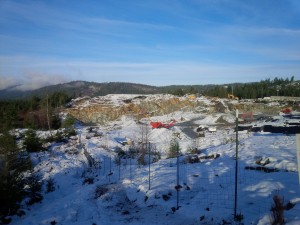 On December 1, 2015 I issued a press release calling on the BC Government to immediately cease operations at the site after the Cowichan Valley Regional District released a report from Thurber Engineering Ltd. The report identified serious concerns about surface runoff and throughflow potentially becoming contaminated but not adequately being contained or treated. In particular, the Thurber Engineering Ltd report noted that:
On December 1, 2015 I issued a press release calling on the BC Government to immediately cease operations at the site after the Cowichan Valley Regional District released a report from Thurber Engineering Ltd. The report identified serious concerns about surface runoff and throughflow potentially becoming contaminated but not adequately being contained or treated. In particular, the Thurber Engineering Ltd report noted that:
“The presence of the large volume of water emerging from under the rock armour at the head of the ephemeral stream indicates that runoff storm water sourced from the SIA site is bypassing the sediment pond (i.e by flowing under it) and is being discharged directly onto the land owned by the CVRD”.
This occurred despite the fact that the BC Government mandates that all surface water is required to be “contained on the property and treated in accordance with the permit”.
The water containment facility is shown in Figures 1a and 1c. Figures 1b and 1d illustrate a pool of water immediately beside the treatment facility. The Thurber report identifies this as potentially a source of water that feeds the ephemeral stream and bypasses the containment facility. Frankly, it would be incredibly easy to verify this by simply tagging the water with a dye as is commonly done in municipalities when potential storm/sewer crossovers are detected.
Figure 1: Photographs of the water containment system and the standing pool of water immediately beside the containment system taken on: a), b) November 16, 2015; c), d) from a helicopter on January 6, 2016.
In my view we have a serious situation where contaminated soils are being delivered to the site on an ongoing basis. Yet at the same time very troubling questions have been raised by an independent engineering firm about the functioning of the water containment system. I am beyond astounded that the Ministry would continue to allow contaminated soils to be delivered while the “permittee and their qualified professional(s)” review the situation as per the functioning of the water containment system.
I also remain troubled by the frequent referral to an ephemeral stream in numerous reports. By definition, an ephemeral stream is one that exists “only briefly during and following a period of rainfall in the immediate locality.” Yet I was given a tour of the contaminated soil facility on August 5th, 2015 and it had been very dry. At that time the stream was running and the pond was still present. This suggests to me that a component of water found in the pond has originated from below the surface.
Sulphur and Sodium Chloride Contaminants
The Shawnigan Lake residents most recently have been expressing increasing concern over the fact that contaminated soils high in sulphur and salt (sodium chloride) from Pacific Coast Terminals in Port Moody are being dumped in the operating facility.
Water in the “ephemeral creek” has been tested several times by the Ministry of Environment. The Ministry of Environment reported (see SW1) that water in the ephemeral creek (about 15m from where the containment pond discharges into it) on November 14, 2015 had:
- a sulpher concentration of 56.1 milligrams per litre
- a sodium concentration of 21.8 milligrams per litre
Samples collected by the Ministry of Environment on November 17,2015 at the same location on November 14 revealed (see E292898):
- a sulpher concentration of 23.2 milligrams per litre
- a sodium concentration of 9.16 milligrams per litre
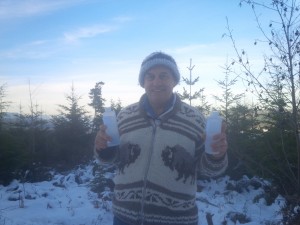 A summary of these results was put together in the media package provided by Shawnigan residents on January 6, 2016.
A summary of these results was put together in the media package provided by Shawnigan residents on January 6, 2016.
On the same day I took the opportunity to collect further independent samples. After the aerial tour of the site, I hiked around the property and collected two samples (Figure 2a and b) in the vicinity of where the Ministry of Environment collected their samples. I collected a third control sample in Shawnigan Creek upstream from the contaminated soil facility at almost the exact same location of where I collected my control sample in my earlier sediment analysis (see Figure 2c).
Figure 2: Photographs of the location of where the two water samples were taken in the ephemeral creek: a) at a location a few metres upstream from where the Ministry of Environment collected their water samples (UP POND in the January 6, 2015 water analysis data); b) at the location where the Ministry of Environment collected their water samples (DOWN POND in the January 6, 2015 water analysis data). c) Photograph of the location where I collected my control sediments for my earlier analysis. The control water sample was taken a few metres north of this location (Control at bridge in the January 6, 2015 water analysis data).
My three resulting water samples were analyzed by Jody Spence at UVic using a Thermo X-Series2 Quadrupole ICP-MS. All water samples were filtered through clean (new) polyvinyl filters (0.45 um). A separate filter used for each sample. The first 10 mL of each sample was flushed through to condition the filter before collecting the 10 mL aliquot for analysis. After filtration, the samples were acidified with 0.2 mL of 16 Molar Environmental Grade Nitric Acid.
The resulting January 6, 2015 water analysis data reveal the following results:
Sample 1: UP POND; Figure 2a
- a sulpher concentration of 33.3 milligrams per litre
- a sodium concentration of 13.5 milligrams per litre
Sample 2: DOWN POND; Figure 2b
- a sulpher concentration of 32.4 milligrams per litre
- a sodium concentration of 13.1 milligrams per litre
Sample 3: Control at bridge; Figure 2c
- a sulpher concentration that was undetectable to the limit of machine precision
- a sodium concentration of 1.85 milligrams per litre
These results are consistent with the elevated sulpher and sodium concentrations found by the Ministry of Environment back in November.
Two additional observations are worth noting. On the day I collected my samples there was no water pooled in the water containment facilities sedimentation pond (it was largely covered with snow). The pond immediately beside it was quite large and the surface appeared to be frozen. In addition, a distinct smell of sulpher hydroxide was noted at the property line where the containment facility allows water to enter the ephemeral creek.
Summary
Based on several independently-collected water samples collected over the last few months it is clear that water in the “ephemeral creek” leaving the property contains elevated levels of sodium and sulphur. The fact that sulphur was undetectable in the control sample makes it pretty clear that the contaminants originate from the Pacific Coast Terminal soils that have been dumped in the operating facility.
While it is clear to me that there is no immediate health concerns to the residents of Shawnigan Lake from the samples I collected, questions still remain. In my opinion it would be prudent for the Ministry of Environment to immediately cease operations at the facility in order to:
- Ensure the water containment facility is actually functioning as required by permit;
- Determine where the water in the pond is coming from and whether it drains into the ephemeral creek;
- Conduct an assessment as to the cumulative effects of high sodium, sulphur and potentially chemicals that will make there way to Shawnigan lake through the ephemeral creek. The site has only just opened and will be in operation for decades.
Failing to take these immediate steps I believe would be a continued dereliction of duty by the Ministry of Environment.
Probing the Government’s Lack of Leadership with Translink
Today in question period I rose to challenge the government’s lack of leadership with respect to Translink. Since the Metro Vancouver transit referendum failed earlier this year, we’ve been waiting for signs that this government understands the challenges facing the Lower Mainland’s transit infrastructure and that it understands the leadership role it needs to play.
Below I include both the video of the exchange as well as the Hansard transcript. At the end I reproduce the media statement my office released in conjunction with my line of questioning today.
Video of Question Period
Question
A. Weaver: Since the Metro Vancouver transit referendum failed earlier this year, we’ve been waiting for signs that this government understands the challenges facing the Lower Mainland’s transit infrastructure and that it understands the leadership role it needs to play.
The appointment of a new minister responsible for TransLink signalled to many that government was about to take its leadership role seriously. We heard almost immediately from the minister that “nothing is off the table” and that he had an open mind to changing the way TransLink was managed. And yet only a couple of months after those comments were made, we have heard that in closed meetings, the minister took the idea of giving more control over TransLink to local governments off the table.
Can the minister please let this House know what has changed since he said all options were on the table and what the minister’s plan is to ensure that the much-needed transit investments aren’t put off until it’s too late?
Minister’s Response
Hon. P. Fassbender: I appreciate the question, because at the meeting I had with the Mayors Council, I clearly said that we are willing to work with the leadership in the region to move toward solutions, not focusing on the problems but looking at opportunities for solutions. But I also challenged the mayors for them to step up to their leadership role in working with the board that they appoint to ensure that we find a path to solutions, that we look at the options that are available and to remember that this government has invested billions of dollars in transportation in the province and in Metro Vancouver.
This government is committed to working with the leadership in the region to find the solutions that will ensure an integrated transportation system for the citizens and for the movement of goods and services.
Supplementary Question
A. Weaver: Thank you, hon. Speaker, for giving me the opportunity to explore that a little more. The question of local control is critical because the province is dramatically under-resourcing its local governments, all the while requiring them to pay for a third of the transit costs.
Furthermore, both the minister and the Premier have slammed the door on the mayor’s plans to develop new, innovative funding solutions, saying that they will require a new referendum if they are to be considered. The government, frankly, has paralyzed transit planning in Metro Vancouver, and they have abdicated their responsibility to show British Columbians leadership.
My question to the Minister Responsible for TransLink is this. Since the provincial government clearly has no interest in providing leadership on the transit file, how does the minister expect local governments to move forward if the province is blocking local control over TransLink and preventing local governments from even considering innovative ways to make up for their lack of financial resources?
Minister’s Response
Hon. P. Fassbender: I know the member probably doesn’t know this or is choosing to ignore it, but I’m sure his taxpayers are very clear that they are paying hospital tax that is not being paid by the residents of Metro Vancouver. Also, clearly, from the day that I was appointed, the first thing I did was select two very capable people to sit on the TransLink board as government representatives, to clearly show that we are engaged in finding solutions and are willing to work with the region to ensure those solutions are found.
In addition, it is very clear this government has said our funding support for transit infrastructure development is on the table, and we’re simply asking the region to come forward with their recommendations on how they will fund their third. I find it interesting that the members opposite, as well, are opposed to asking the residents of Metro their opinion on future funding sources, because indeed, they have a right to do that, and this government will give them that right.
Media Statement
Media Statement October 8, 2015
Funding innovation required for local infrastructure projects
For immediate release
Victoria B.C. – In the B.C. Legislature today Andrew Weaver, MLA for Oak Bay – Gordon Head and Deputy Leader of the B.C. Green Party questioned the Honourable Peter Fassbender, Minister of Community, Sport, Cultural Development and Minister responsible for Translink, as to why the provincial government was restricting local government revenue options for critical infrastructure projects, specifically in Metro Vancouver.
Currently the Provincial Government is requiring Municipal Governments to account for one third of the total costs for transit improvements, despite the fact that the municipal governments receive substantially less in revenue than other levels of government.
“This approach by the government to restrict the ability of local governments to look at new forms of revenue, such as tolls or road pricing, to fund transit and other major infrastructure projects places them in an untenable position” said Andrew Weaver, “The Minister and Premier are risking a total paralysis in transit planning if any new funding sources will require a new referendum, as they are indicating.”
An option the provincial government could explore is using the province’s widely heralded carbon levy to assist Translink, and provide an available fund for communities throughout the province facing similar concerns. The carbon levy is currently fixed at $30 per tonne, and raises $1.3 billion annually in a revenue neutral fashion. Increasing the levy by $5 per year to a maximum of $50 would add an additional $1 billion annually after four years. The carbon levy could remain revenue neutral by ensuring local governments would not raise residential taxes to fund major infrastructure projects.
“The Provincial government has been quick to pass off new responsibilities to local governments, but has completely restricted any new financial resources or innovative funding sources.” said Andrew Weaver, “The premier and ministers continually call for innovation from local government. It is about time we saw some of that here in the legislature.”
– 30-
Media Contact
Mat Wright
Press Secretary – Andrew Weaver MLA
1 250 216 3382
mat.wright@leg.bc.ca
Parliament Buildings
Room 027C
Victoria BC V8V 1X4
Bill 29 – Property Taxation (Exemptions) Statutes Amendment Act
Today in the Legislature I rose to speak in support of Bill 29 – Property Taxation (Exemptions) Statutes Amendment Act, 2015.
Bill 29 ensures that there is consistent treatment across the province with respect to the way independent schools are subjected to municipal property taxation. Presently only the land immediately under a school building is exempt from municipal taxation. While most municipalities extend the exemption to the rest of the school property (playgrounds, playing fields etc.) there have been a few exceptions and some municipalities are contemplating the idea.
Below is the text of my speech at second reading.
Text of 2nd Reading Speech
A. Weaver: It gives me great pleasure to stand and speak in support of Bill 29, Property Taxation (Exemptions) Statutes Amendment Act. My riding is particularly interesting in that there are presently six…. Well, there are five high schools now, but after the election boundaries are redefined, there’ll be six high schools. Three of them are public schools, and three of them are independent schools. Oak Bay, Lambrick, Mount Doug — public schools. St. Michaels and Maria Montessori are presently in the riding and independent schools. Glenlyon Norfolk, soon to be in the riding, as well, is another independent school.
We have much to be proud of, of our education system in British Columbia. Despite what some might have said, Canada ranks at the very top, internationally, in the program for international student assessment scores, particularly in the area of sciences and reading. If we look at the 2012 science rankings, worldwide, No. 1 was Shanghai, China. No. 2, Hong Kong, China. No. 3, Singapore. No. 4, Japan. No. 5, Finland. And No. 6, British Columbia.
Now, when you compare that to 2003, in fact, two of those — Shanghai and Singapore — were not part of the 2003 assessment. So in essence, British Columbia would have been ranked No. 4, worldwide, in terms of science achievement, whereas in 2003, British Columbia was ranked No. 6. So we have much to be proud of in British Columbia with respect to our science education.
The same is true with our language arts. In 2003, No. 1 in the world was Finland. Alberta was No. 2, and British Columbia, No. 3. Since 2002, a number of other jurisdictions have participated in the international PISA. So we see Shanghai and Singapore moving up. British Columbia dropped to No. 6, which would have been fifth if you accounted other jurisdictions that weren’t there.
But what is really important to note is how it did relative to other provinces in Canada and the much-touted Finnish education system. I’ll come to Finland in a second, because in 2003, Finland ranked No. 1 in science, No. 3 in mathematics and No. 1 in reading. British Columbia was sixth in science, fifth in mathematics and third in reading.
Now, what’s indicative of a government that has somewhat lost touch with developing advancements in education, for reasons unknown to anybody, the B.C. government sent a young person to Finland to study the Finnish system. I understand that if you’re looking at the 2003 PISA assessments, you might want to understand the Finnish system. But in 2012, British Columbia was above Finland in mathematics, was above Finland in reading and was tied, statistically so, in science. There’s much to be proud of about our education system in British Columbia, and we do not need to study the Finnish system to find that out.
We are the top-ranked province in Canada, in terms of science education as well as reading, and yet that was not the case in 2003. Alberta was the top-ranked province in all three areas covered by PISA. But there is one area that B.C. does have some trouble with and I would argue that this has nothing to do with the quality of our teachers in British Columbia, but rather as the quality of the means and the ways they’re being trained to teach mathematics.
Mathematics is the one subject where B.C. has dropped, relative to other jurisdictions, in the move that has moved mathematics from learning the times tables by rote memorizing — learning by memorization, a critical aspect of learning mathematics — and moving into trying to understand what that means. You should know that seven times eight is 56, right off the bat. That’s a critical building block. But you shouldn’t necessarily have to know in grade 3 that….
M. Farnworth: Nine times seven?
A. Weaver: Sixty-three, and nine times nine is 81.
But today in school you’re not taught nine times seven is 63. You’re taught that nine times seven is ten times seven minus one times seven. Now, that’s an abstract idea that many people in elementary education simply can’t grasp. If you want to know why we’re going down in maths, you have only to look at the way our teachers are being trained in the universities, not the quality of the teachers themselves. Apart from mathematics, we rank at the very top internationally.
I will not listen to those who bemoan the state of our education system in B.C. We rank second to no other province in terms of quality, and we’re one of the top nations internationally and certainly the top nation in the western hemisphere.
What does that have to do with the bill? Well, it has to do with treating independent schools the same as public schools. Presently, the contents of this bill are actually in play in the Vancouver Charter already. The Vancouver Charter is quite specific in terms of what can or cannot be included in property taxation. This bill essentially says to the rest of the province that we’re going to be consistent. Whether you be in Victoria, Prince George, Kelowna, whether you be in Fernie, whether you be in Haida Gwaii, Prince Rupert, schools will be treated one and the same in terms of their property taxation.
Many people often don’t realize that we’ve had independent schools in Canada since the 17th century when the first Catholic schools were established in Quebec. In many jurisdictions, we have publicly funded school boards that fall along denominational lines. In Ontario and Alberta, for example, we have Catholic school boards and we have non-Catholic school boards. They’re both public school systems that go back to Confederation days. Here in B.C., we would call Catholic schools independent schools, where in other provinces, they’re considered part of the public system.
We have other potential problems which exist presently. Let’s suppose right now that we have a Catholic school on church property. How does that fall within the property taxation realm? Is it a church? Is it an independent school? Is it in the Catholic school board? No. This needs to be cleared up. While this bill is very short in terms of length, it’s important in terms of substance, because it actually closes a lot of potential problems that could create a potpourri of odd property taxations across the province.
One of the things that I support in this bill is the fact that it does not apply to things like endowment lands, things like houses for staff, for example, if there may be some independent schools that provide housing for their teachers. There may be some other independent schools that have large endowment lands. These are not being covered under this legislation. It’s simply the school and that which is typically used in school.
There are benefits for that. A school in my riding, Glenlyon — well, soon to be my riding; half the school is in my riding — for example, has a lovely Astro Turf field that is used by the local community in partnership, the Bays United soccer community. They have a public relationship with the independent school, yet there is a potential — it’s not right now — for that to be taxed, even though the public is benefiting from this field that is used by all.
In summary, then, first off I would like to recognize that we do have an outstanding education system. It does not help our education system when we continue to bemoan the problems in it instead of celebrating the successes in it. Sure, there are problems in our education system. There are problems in everything around us. But we will not move this education system forward if all we do is fixate on the negative that’s in it.
Secondly, I think fairness is critical. This bill provides fairness, recognizing that there are other provinces where independent schools, like the Catholic system, are actually part of the public system, whereas in B.C. we’ve never had Catholic school boards. Finally, it does not exclude some of the extraneous properties attached with an independent school. Those will be subject to municipal taxes.
With that, I thank you for your time. I’m only sad that the new Minister of Education is no longer sitting beside me, but across the hall. I do appreciate your office, hon. Speaker, and of those House Leaders, in preparing me here in the Legislature for two upcoming by-elections so that my colleagues can sit beside me.
Video of 2nd Reading Speech
The Vote
Second reading of Bill 29 approved unanimously on a division.

